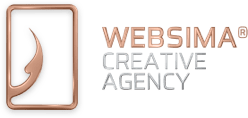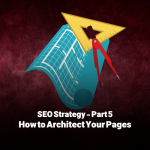Part 4: Building the Content Puzzle
In part 4, we will try to build our content puzzle.
In other words, we will try to figure out which targeted keyword (That was found in previous steps) to be applied in which landing page, to get the most optimised outcome.
You can either watch the video from Websima YouTube Channel or read this article as the fourth part of this season. (We suggest you watching the video)
In this part, we will discuss how you can organise your keywords to get the best outcome.
To do so, we firstly need to know how many page types we have on our website:
Types of Pages for Websites:
The first category is:
Main pages: Includes homepage, blog page or archive pages.
The second one is:
Taxonomy & Listings: Includes categories, brands, and tags.
This type represents the pages in which your products are tagged based on brand, colour and size.
The third category would be:
Single posts: such as news, posts, and products.
The content’s nature of the above three webpage types, would be helpful for your websites’ SEO.
Finally the fourth category is:
General pages: such as about us, contact us and search, which are static pages, so they do not add much value to your SEO

We can also categorise all the pages from a different perspective (page’s nature) as below:
– Accessibility (User experience) such as Home page or tags.
– Clue or sale such as product page or service page.
– Content such as posts.

We may have a combination of two categories on a single page. For example, pages which are filtered for product type, include both accessibility and clue categories.
Furthermore, you may post content, describing one of your popular products. In this case, you have both clue and content categories together on one page.
You can apply this categorisation to any kind of website
Categorising based on pages’ Opacity
Here, we try to categorise different kinds of pages based on their clearness or unclearness.
What do we mean by uncleanness and clearness? We have already talked about the opacity of the keywords in part 3. For example, if someone searches for “Mercedes Benz”, the intention is not clear to us. On the contrary, if someone searches for “buying Mercedes Benz s500”, the opacity is clearly high, as we know the user’s intention.
Now we will try to categorise the pages, based on its targeted keywords’ opacity range, from unclear to clear.

Homepage categorised under unclear category as the general keywords are pretty much used in homepage.
“Archives” is the next unclear page, though it is less unclear than the homepage. Archives can include subcategories and tags.
At the other end, we have contents which are clearer. Articles or products sit under the content category.
With this information, we can start to draw our tree structure.
Drawing the Tree Structure
Now, with such information in hand, we can start to draw our tree structure.
Let’s go back to our previous example of “car Lease Company” and draw its tree structure.
Keep in mind that we will have “the cloud of keywords” for each section. If you want to know what the cloud of keywords is, you’d better watch part 2 first.
Also, be informed that we will not include “to do” and “to go” categories here, as they are most likely effective on google map and google my business. Therefore, we will only have “to know” and “to buy” categories here. (We have talked about these categories in part 3)

For a car lease website, the “car lease” can be used for the homepage as a keyword, as “car lease” is unclear, and it can be “to know” or “to-buy”.
The next level for archives can be “SUV” and “Crossover”. These keywords are moving towards “to buy” from “to know”.
As the subcategory, we can use the brand name like “Mercedes Benz”, “BMW” and “KIA”. Here, they are getting closer to “to buy” rather than “to know”. We just need to remind you that we are talking about the “cloud of the keywords”. So, “buy a Mercedes Benz” will be in this section.
For the tags and brands, you can use “lower than AUD 100’000 ” or “luxury cars” or “economy cars”, as they are more “to buy”.
As for the next level, we have the contents.
News like “new X5 face 2021” can be used here. This keyword is more like “to-know” rather than “to buy”.
Besides, in your articles, you can have comparisons like “comparing X5 and GLE”. This type of information can be categorised under both “to know” and “to buy” categories. Therefore, you can load this article and insert a call-to-action into the page, in order to motivate customers to contact you, after reading the article. Product names such as “BMW X5 2021” will go to the last section, and it completely sits under the “to buy” category.
As you can see with this tree structure, we can easily manage our contents on the website and come up with new ideas to improve our SEO. If you need SEO Consultancy, you can contact us for a free consultation.
Now that we know what we are going to do on our website, we, in part 5, will tell you about your content architecture and how to put your content in your website to get the best outcome.
Please subscribe to our channel and ask any question you may have here. We will do our best to answer it as soon as possible.





